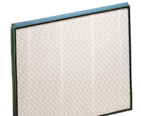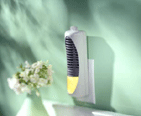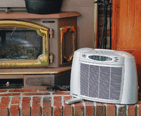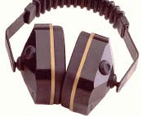Air purifiers are basically classified due to the method used to eliminate various sized particles and/or gases from the air. The types of techniques available for use in air purifiers include mechanical filters, electronic air cleaners, and hybrid filters for the elimination of particles, and gas phase filters to control odors. There are also air purifiers which produce ozone in order to remove various airborne pollutants. The selection of a type of an air filter depends on the intended use of the air purifier. There are wide applications of an air filter. Air filters are applied in order to protect the HVAC equipment and components, to protect the furnishings decor of inhabited spaces, to reduce housekeeping and building maintenance, to decrease heating equipment fire hazards, and protect the general well-being of residents. The low effective filters in central HVAC systems can be used in order to accomplish most of these requirements. However, to improve the health of residents higher efficiency filters are needed.
Types of air purifier filters
Generally, there are mechanical, hybrid and gas phase filters. Mechanical filters differ in their efficiency of performance due to the type of a mechanical filter. The highest effectiveness filters are HEPA ones but flat and pleated filters are also widely used in central filtration systems as well as in portable air cleaning devices. Hybrid filters contain both a mechanical filter and an electrostatic precipitator or an ion generator in an air purifier, which makes the air cleaning process more effective in terms of eliminating various particles from the environment. Gas phase filters are best for neutralizing different odors and gases in the air. There are several physical mechanisms due to which mechanical filters remove airborne pollutants from the air. Larger particles stick to the filtration medium, smaller particles are eliminated from the airflow by smaller openings in the filter, whereas submicron-sized particles are removed from the air by electrostatic interaction between surface charges of particles and the filter medium. The last method is used in the high efficiency particulate air filters to capture the tiniest particles. The major types of mechanical filters include flat filters, pleated filters and high efficiency particulate filters.
Flat filters
 Flat filters contain advance technology paper, textile, slit or expanded aluminum, synthetic, glass, cellulose fibers, or other substance. This type of filter is considered to be a low efficient one and is usually found in most of residential HVAC systems. Flat filter is frequently one-half-inch to one-inch thick and remove mostly large particles while its effectiveness in collecting smaller particles remains low. Another type of a mechanical filter is a pleated one. Small denier fibers are used to increase the filter media density and make a mechanical filter more effective in collecting pollen, dust, smoke, bacteria and viruses. With the bigger filter media density another problem occurs, which is a decreased airflow through the filter. This causes the decrease in the function of a filter. Pleated filter overcomes the mentioned problem making it more effective in eliminating airborne particles from the size of 0.3-10 micron diameter. A pleated filter generally means an extended-surface media filter and its total filtration area is larger than that of a flat filter.
Flat filters contain advance technology paper, textile, slit or expanded aluminum, synthetic, glass, cellulose fibers, or other substance. This type of filter is considered to be a low efficient one and is usually found in most of residential HVAC systems. Flat filter is frequently one-half-inch to one-inch thick and remove mostly large particles while its effectiveness in collecting smaller particles remains low. Another type of a mechanical filter is a pleated one. Small denier fibers are used to increase the filter media density and make a mechanical filter more effective in collecting pollen, dust, smoke, bacteria and viruses. With the bigger filter media density another problem occurs, which is a decreased airflow through the filter. This causes the decrease in the function of a filter. Pleated filter overcomes the mentioned problem making it more effective in eliminating airborne particles from the size of 0.3-10 micron diameter. A pleated filter generally means an extended-surface media filter and its total filtration area is larger than that of a flat filter.
HEPA filters
Another extended surface media mechanical filter is a high efficiency particulate air filter, HEPA. It was earlier called high efficiency particulate arrestor and was first developed in the United States during World War II to protect against radioactive pollution. 10 years after the first HEPA air purifier had been constructed, it was introduced into sales and became an officially registered trademark for very effective filters. HEPA air filters are said to be the most efficient air cleaning devices. This defines a true HEPA filter in contrast with a near HEPA filter. A near HEPA or “HEPA type” air purifier is the one that did not meet the HEPA requirements and is efficient at 0.3 microns of less than 99.97% but greater than 90%. Though not as efficient as true HEPA filters, “HEPA type” filters are efficient enough to remove dust, pollen, mold, bacteria, viruses and other allergens from the air. And they are cheaper than original HEPA filters.
True HEPA filters have a very high efficiency in eliminating airborne particles but require very high energy costs. Due to their size HEPA filters are not applied in the central HVAC systems but can be used in portable air purifying devices. According to their high effectiveness, HEPA filters are used for medical, pharmaceutical, military, commercial as well as for residential purposes. However, they are not very cheap and require replacement of filters, which are not very cheap, price ranges between $50 and $100 depending on the size of air purifier . No matter the price, HEPA filters have become indispensable for people who suffer from asthma, allergies and other respiratory diseases.
Hybrid filters
Hybrid filters are a later modification of air cleaning devices. They contain a mechanical filter and an electronic precipitator or an ion generator in a central HVAC system or a portable air purifier. A flat or pleated mechanical filter media is charged in the manufactory and has a charge that attracts airborne pollutants to the filter. Particles are then trapped in the filter and are eliminated from the airflow. This makes a media filter more effective in collecting airborne particles but there is an increased resistance to airflow when the filter is soiled. Thus hybrid filters require a periodical replacement. Hybrid filters comparing to HEPA air filters have lower energy cost but are quite effective when new. However, their effectiveness in air cleaning decreases with use and there is an addition cost due to a frequent replacement of filters.
Ionizing charged-media hybrid filter
Another category of a hybrid filter is an ionizing charged-media type filter. This type of an air purifier emits a number of negatively charged ions which then attach to the airborne particles, such as dust, pollen, mold, bacteria and other. These larger particles are then collected by a charged-media filter and eliminated from the air. Ionizing charged-media type filters are claimed to increase the performance of filters and reduce particulate counts in the occupied space. However, their initial cost is relatively high comparing to high efficiency particulate filters (HEPA). There is also no certain data that this type of hybrid filters have a higher efficiency. Electrostatically enhanced filters also exist, although they are not yet available commercially. Experiments have shown that this type of hybrid filters have an increased filtration efficiency. However, they should be first tested under normal environmental conditions not only under experimental ones until they can be introduced into sales for commercial or private purposes.
Chemical and gas filters
None of the above mentioned air filters can efficiently remove environmental gases and odors. Chemical filters are incorporated in many air purifiers in order to remove odors and gases from the air. Gas phase filters are the most effective ones used to neutralize gases and associated odors from the air. Physical adsorption and absorption (or chemisorption) are two major types used to remove solvent vapors, gases and vapors in indoor air, odors and cigarette smoke. Charcoal is widely used for adsorption, as it has a large surface area, low cost and is a stable material. Chemisorption is a chemical process during which the sorbent attracts gas molecules on the surface of the sorbent. An example of such a sorbent is potassium permanganate, an active oxidating reagent that is able to convert formaldehyde gas into water and carbon dioxide which are benign substances. Nowadays more effective methods in gas capture are used. This is possible due to application of two different mixtures rather than one in a gas phase filter. Gas phase filters of this kind are more effective to remove odors and gases than charcoal alone. They are also relatively inexpensive and require no filter replacement. These are easily incorporated in residential HVAC systems as well as in portable air cleaning devices. In general, all air purifiers remove airborne particles from the air but their effectiveness in the process depends on the type of filter used. The most efficient air purifier is the one with a HEPA filter. And the most effective device in removing gases and vapors is a gas phase filter. These two used in residential HVAC systems or portable air purifiers meet most of the clean environment requirements.
 Most air purifiers are available in various shapes and forms. Therefore a customer should consider what size would be the best to fulfill one’s needs. A bigger room generally has a larger volume of air to be filtered and hence it is obvious that a greater filter is then needed to reach a better quality of indoor air. There are several aspects to be considered in order to choose an air purifier of a proper size to suit in the room. First, a customer should check the square footage of a room. Every air purifier has the square feet listed under “product details: room size”. A customer should know the square footage of a room, where an air purifier is intended to be placed. If the square footage listed matches with the size of a room or is a little bit larger, then such an air purifier is suitable for the room size. Second, a customer should compare room air changes per hour. This indicates how often the air in a room is cleaned.
Most air purifiers are available in various shapes and forms. Therefore a customer should consider what size would be the best to fulfill one’s needs. A bigger room generally has a larger volume of air to be filtered and hence it is obvious that a greater filter is then needed to reach a better quality of indoor air. There are several aspects to be considered in order to choose an air purifier of a proper size to suit in the room. First, a customer should check the square footage of a room. Every air purifier has the square feet listed under “product details: room size”. A customer should know the square footage of a room, where an air purifier is intended to be placed. If the square footage listed matches with the size of a room or is a little bit larger, then such an air purifier is suitable for the room size. Second, a customer should compare room air changes per hour. This indicates how often the air in a room is cleaned.  Customers who suffer from asthma, allergies and other respiratory system disorders choose air purifiers which are installed into residential HVAC systems and are non-portable. This allows a higher efficiency in cleaning the indoor air from various pollutants and keep the air quality up to the one recommended by official health organizations. People, who are aware of how polluted the indoor air is and who care about their health, also choose air purifiers in order to improve the quality of indoor air in private houses. This is usually accomplished by portable air purifying facilities. When one has a portable air purifier at home there is a major question:
Customers who suffer from asthma, allergies and other respiratory system disorders choose air purifiers which are installed into residential HVAC systems and are non-portable. This allows a higher efficiency in cleaning the indoor air from various pollutants and keep the air quality up to the one recommended by official health organizations. People, who are aware of how polluted the indoor air is and who care about their health, also choose air purifiers in order to improve the quality of indoor air in private houses. This is usually accomplished by portable air purifying facilities. When one has a portable air purifier at home there is a major question:  One might assume that the bigger the air purifier the higher its noise level. However, it is not necessarily true.
One might assume that the bigger the air purifier the higher its noise level. However, it is not necessarily true.  Flat filters contain advance technology paper, textile, slit or expanded aluminum, synthetic, glass, cellulose fibers, or other substance. This type of filter is considered to be a low efficient one and is usually found in most of residential HVAC systems.
Flat filters contain advance technology paper, textile, slit or expanded aluminum, synthetic, glass, cellulose fibers, or other substance. This type of filter is considered to be a low efficient one and is usually found in most of residential HVAC systems.